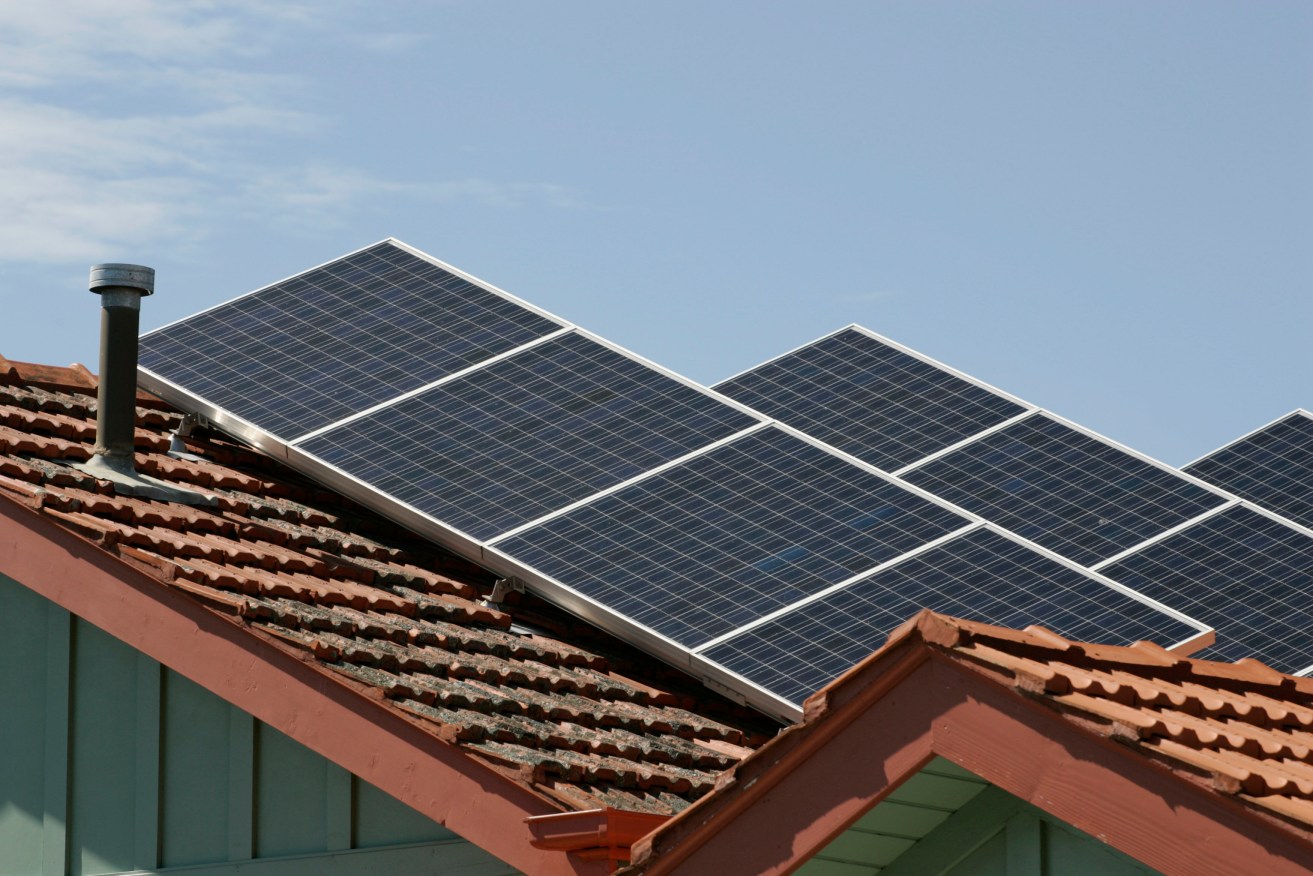Revealed: The suburbs, states and territories driving Australia’s rooftop solar boom
A huge shift is underway on the rooftops of Australian households, with new data revealing that households dispatched more solar power to the grid last summer than the brown coal industry.

Photo: AAP/Raoul Wegat
Figures published by the Clean Energy Council last week show rooftop solar provided a record 14 per cent of Australia’s power, or 8046 GIgawatt hours (GWh) – a 19.5 per cent rise.
“There is no doubt with inflation and cost of living pressures, people are turning to rooftop solar in record numbers,” Clean Energy Council chief executive Kane Thornton said on Tuesday.
“We’re seeing a fundamental shift; consumers are becoming energy generators, making their own clean energy, reducing their bills and taking on the electricity companies.”
Thornton said that the CEC’s analysis also only includes power sent back to the grid, meaning households were producing far more solar electricity than they used themselves.
More than three million households across Australia now own solar panels, with the time it takes for a 7 kilowatt (kw) system to pay for itself in lower power bills falling to a record low 3.4 years.
Stephanie Gray, deputy director at advocacy group Solar Citizens, said that while the number of solar installations fell from a record high in 2021, Australians were installing far larger systems.
“Rooftop solar remains a great investment and it’s really the best way to protect yourself from globally high coal and gas prices that are likely to remain high for years to come,” she said.
“The best way to get bang for buck from your system is to shift your electricity use to the daytime where possible, so you’re utilising the cheap solar energy straight from your rooftop.”
Solar power: State-by-state
The CEC’s figures show South Australia continues to lead the way on rooftop solar as a proportion of its electricity base, with 27.6 per cent of its power generated by households.
The suburbs of Salisbury, Morphett Vale, Aberfoyle Park, Smithfield Plains and O’Halloran Hill were the biggest solar energy producing parts of South Australia, the CEC figures reveal.
New South Wales, meanwhile, has been the biggest improver over the past year, with 13.1 per cent of the traditionally fossil fuel reliant state’s electricity now being fed into the grid from roofs.
Lismore, Beaumont Hills, Ballimore, Alison and Airds were the top five performing suburbs for rooftop solar production in NSW – helping the state achieve 2216 GwHs of solar generation.
Queensland was the second largest producer of rooftop solar power in absolute terms, with 2039 GwHs produced, led by Abbortsford, Booral, Aroona, Athol and Augustine Heights.
Fossil fuels still dominate electricity in Queensland, however, with rooftop solar only accounting for 12.5 per cent of the state’s total power generation – a 14.7 per cent increase on last year.
Victoria, despite being Australia’s second most popular state, was ranked third in rooftop solar production, recording 1590 GWhs, which was 12.2 per cent of the state’s total grid needs.
But Victoria has seen the role of its rooftop solar ecosystem grow, up 12.2 per cent as a proportion of total electricity generation across the state over the past year.
The top suburbs in Victoria were Hoppers Crossing, Cranbourne North, Craigieburn, Werribee South and Narre Warren South.
West Australia was ranked second among the states for the role solar plays in its overall grid, with 21.4 per cent of its power being generated on rooftops last summer, according to the CEC.
That was up 15.7 per cent on last year, with Mandurah, Wangara, Forrestdale, Cockburn Central and Canning Vale South leading the way across Australia’s biggest geography.
This article was first published in our sister publication The New Daily.




